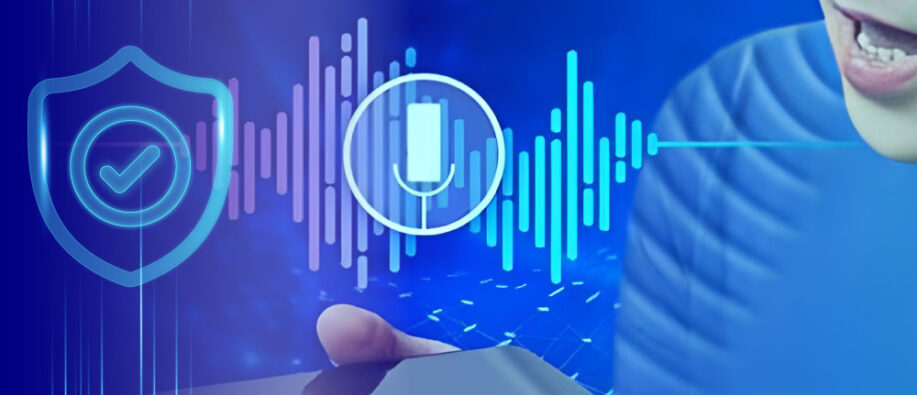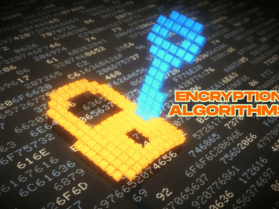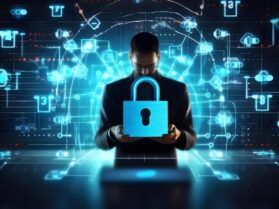Have you ever considered what may happen if your passwords disappeared overnight? Instead of viewing this as a hypothetical question, many institutions view it as a strategic decision. For the most secure systems, institutions are replacing passwords with voice recognition technologies. This ultra-modern approach is changing how organizations think about the intersection of security and regulatory requirements.
Remember when voice commands were limited to asking your phone about the weather? Those days are long gone. Voice recognition technology has evolved from a convenient consumer feature into one of cybersecurity's most powerful tools. These technologies generate authentication methods.
They even meet the strictest regulatory requirements by evaluating more than 100 distinct vocal features, such as laryngeal resonance and pronunciation patterns. The way this strategy tackles the age-old security conundrum of bolstering safeguards without causing friction that pushes users into dangerous solutions is what makes it so intriguing.
The Surge of Voice Recognition in Cybersecurity:
Voice recognition has developed into a reliable authentication technique in cybersecurity frameworks, offering a biometric alternative to conventional credential systems. The market for speech recognition biometrics is about to progress at a CAGR of 25.6% from 2023 to 2028.
Security architects have increasingly deployed this technology as part of zero-trust architectures, particularly in environments handling sensitive financial or healthcare data where regulatory compliance demands robust identity verification protocols beyond what traditional password systems can deliver.
How Does Voice Recognition Technology Work?
The underlying technology operates through sophisticated signal-processing techniques that transform acoustic waveforms into actionable authentication decisions. When a user speaks, the system records voice samples at more than 16,000 times per second, identifies frequency components using Fourier transforms, and uses probabilistic matching algorithms to compare the samples to voiceprint templates.
Current systems include liveness recognition algorithms, environmental noise compensation, and continual modification. This technological approach creates authentication barriers that maintain security integrity while eliminating friction points commonly associated with knowledge-based verification methods.
Enhancing Compliance with Regulatory Standards Using Voice Recognition
Strong synergies are produced for regulatory attestation when voice recognition technology is integrated with compliance management systems. By detecting particular terms, disclosure omissions, or illegal access attempts, these systems can automatically discover any regulatory standard violations when deployed throughout an organization's architecture.
In order to meet the evidentiary criteria of frameworks such as SOX, HIPAA, and GDPR, the resulting audit trails offer thorough documentation of access events with non-repudiation features. Voice biometrics used with multifactor authentication protocols greatly improves an organization's compliance posture.
Voice recognition technology uses intrinsic physiological traits that are difficult to hack. The distinct spectrum characteristics, formant frequencies, and temporal fluctuations of the voiceprint produce authentication methods that meet the strict identity verification standards set by regulatory agencies and are completely consistent with zero-trust security models.
Voice recognition technology considerably improves threat detection capabilities within compliance-sensitive environments. Through voice analysis, by establishing baseline communication patterns, security teams can rapidly identify deviations that may indicate credential compromise or social engineering attempts.
In addition to enhancing security posture, this dynamic method of threat identification demonstrates the "reasonable security measures" that are becoming more and more necessary in regulatory frameworks and data protection laws across international jurisdictions.
Key Benefits and Challenges of Voice Recognition in Cybersecurity
Benefits
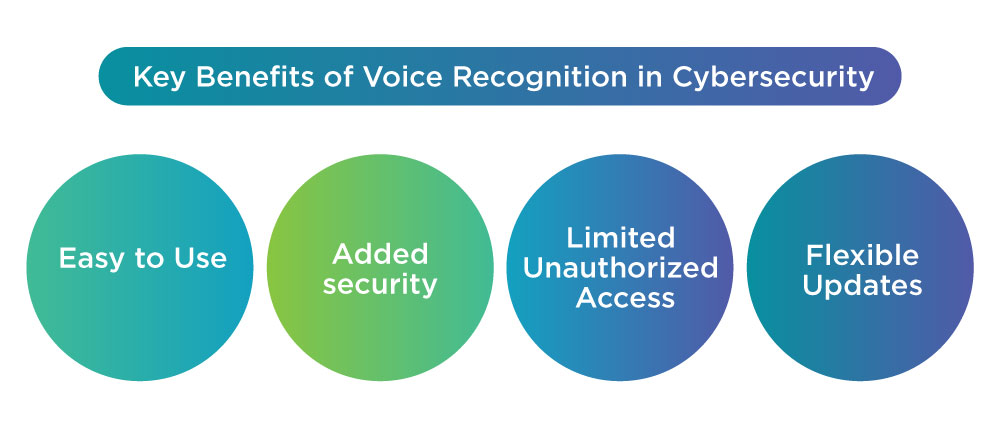
Voice recognition authentication is the easiest to use. Users can safely authenticate simply by their voices, as opposed to memorizing complex passwords or carrying a separate physical token. This more streamlined process encourages wider usage while simultaneously instituting strong authentication measures.
Companies adopting voice authentication technologies should experience a significant decline in incidents of unauthorized access. Each individual human voice contains and is characterized by over 100 distinctive features, from pitch and tone to speech patterns.
With the inherent, unique, and various features of the human voice, it is challenging to imitate. Voice signatures cannot be guessed or stolen the way passwords and tokens can. Voice signatures can also be changed or replaced, but there is no simple forced replacement similar to non-bio characteristics.
Challenges
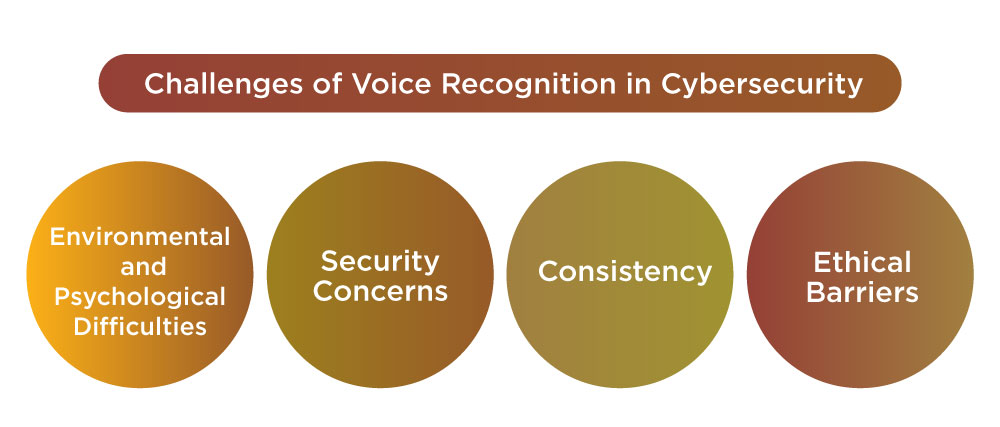
The accuracy of voice recognition may be decreased by outside noise, inappropriate microphone quality, or human physiology. Accuracy may also be affected by multiple circumstances, including but not limited to the user feeling comfort, confidence, or health (sick, cold, etc.) decisions.
Another unique precursor or concern to address from a security professional stance would be a replay or reuse of an authentic user's voice when facilitated by that legitimate user. Perhaps a nefarious character collects an authorized (legitimate) user's speech and finds some way to collect or reuse their speech (sentences).
Privacy concerns have and will continue to exist with the use of voice recognition. Users and consumers are interested in being mindful about what data is captured and retained, and of course, the analysis for purpose (from or for authentication or possibility of something menacing).
The Future of Voice Recognition: AI, Deep Learning, and Security Innovations
Voice recognition technology has revolutionized how we use our gadgets. These days, sophisticated technologies can accurately translate colloquialisms. It allows us to operate our smart homes, dictate messages, and conduct searches without pressing a button. The secret behind this is the complex pattern recognition programs, which are based on large volumes of genuine human speech.
With the increase in computing power, voice recognition technology advances in both accuracy and speed. Distinguishing between different speakers and different accents and even detecting the emotional state from the speaker's voice is now possible with state-of-the-art technology. The elderly and physically challenged can now easily interact with technology, making voice interfaces a great democratizer of technology.
Securing advancements is the next frontier of voice recognition. Numerous companies are currently working on systems that can identify the speaker, such as fingerprints or facial recognition. The technology of voice recognition is based on hundreds of voice features that are impossible to copy, which is why such protection is reliable and works without friction.
A great future is waiting for us, and voice control will be more integrated into our lives. For more informational content, keep visiting us at SecureITWorld.
Also Read: 5 C’s of Cybersecurity – Strategies for Business Owners to Eliminate Cyber Attacks

